General Questions & Answers
We include questions that we often hear. Do you still have questions? Call +1.226.246.2979 or LIVE CHAT with us for real-time support
-
 💡 What's the difference between a trademark, copyright, and patent? Let's explore the world of intellectual property.
Trademarks, copyrights, and patents are distinct forms of intellectual property protection, each serving a unique purpose:
💡 What's the difference between a trademark, copyright, and patent? Let's explore the world of intellectual property.
Trademarks, copyrights, and patents are distinct forms of intellectual property protection, each serving a unique purpose:
Trademark:
- Purpose: Trademarks are used to protect symbols, names, or slogans that distinguish and identify goods or services in the marketplace.
- Scope: They safeguard brand identity, preventing others from using similar marks in a way that could cause confusion.
- Protection: Trademarks are renewable and can potentially last indefinitely as long as they are actively used and renewed.
- Examples: Logos (Nike's swoosh), brand names (Coca-Cola), and slogans (McDonald's "I'm Lovin' It").
Copyright:
- Purpose: Copyrights protect original works of authorship, such as literary, artistic, and musical creations.
- Scope: They grant the creator exclusive rights to reproduce, distribute, perform, or display their work for a limited period.
- Protection: Copyrights typically last for the lifetime of the creator plus 70 years in the US and Europe or plus 50 years in Canada, after which the work enters the public domain.
- Examples: Novels, paintings, music compositions, and software code.
Patent:
- Purpose: Patents are granted for new, useful, and non-obvious inventions or discoveries or improvements to existing inventions.
- Scope: They provide exclusive rights to make, use, and sell the patented invention for a specific period (usually 20 years).
- Protection: Patents have a finite duration, after which the invention becomes public domain.
- Examples: Innovative technologies, machinery, pharmaceuticals, and unique processes.
To open in a new tab, click: Do You Need A Patent, Trademark, or Copyright?
Can't find the answer that you are looking for?
Submit your question with your email -
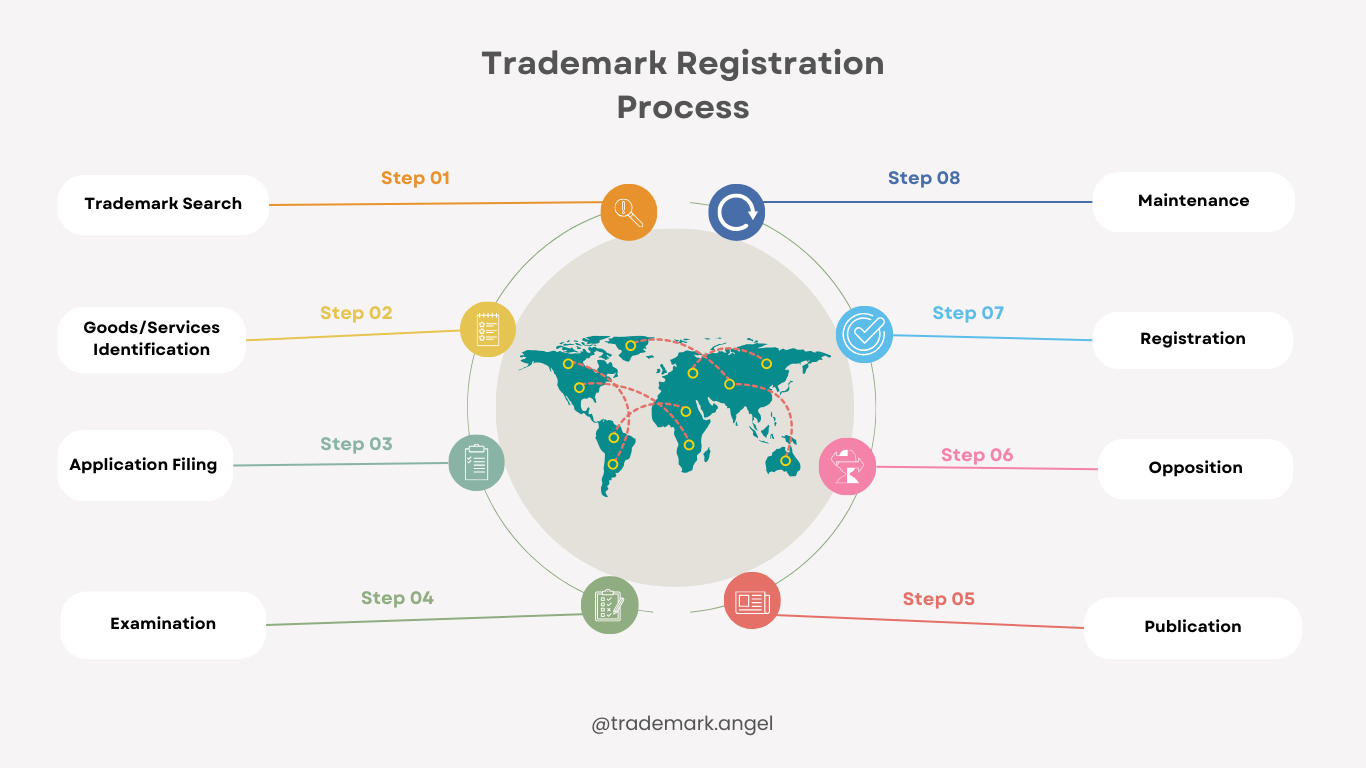
Trademark Registration Process
📝Trademark registration process might seem daunting, but we've simplified it for you! Here are the steps to protect your brand:- Research: Start by checking the official Trademark database for existing trademarks to ensure your mark is unique and available.
- Identify Goods/Services: Define the products or services your trademark will cover – a critical step for your application.
- Filing Application: Submit your trademark application to the relevant Trademark Office in your jurisdiction.
- Examination: Your application will be reviewed to meet legal requirements.
- Publication: If approved, your application will be published, allowing for potential objections.
- Opposition Period: During this time, other trademark owners can object to registration of your application.
- Registration: With no objections or resolved issues, your trademark will be registered.
- Maintenance: Regularly renew and maintain your trademark to keep it protected.
To open in a new tab, click: What Is The Trademark Registration Process?
Can't find the answer that you are looking for?
Submit your question with your email -
 📚 Did you know that trademarks can protect your brand from competitors?
Here's how they provide protection:
📚 Did you know that trademarks can protect your brand from competitors?
Here's how they provide protection:
- Exclusive Rights: Trademarks grant you exclusive rights to use a specific name, logo, or symbol in connection with your products or services. This exclusivity prevents competitors from using a similar mark that could confuse your customers.
- Brand Recognition: Trademarks build brand recognition. Customers often associate your mark with the quality and origin of your products or services. This recognition deters competitors from trying to imitate your brand.
- Legal Recourse: With a registered trademark, you have a legal basis to take action against competitors who attempt to infringe on your mark. This can include cease and desist letters or lawsuits, which can lead to payment of damages for infringement.
- Deterrence: The mere presence of a registered trademark can discourage competitors from adopting a similar mark, as they are aware of the legal consequences.
- Asset Value: Trademarks can increase the overall value of your business. They are considered valuable assets, which can be licensed, franchised, or sold, adding another layer of protection against competitors.
To open in a new tab, click: Did you know that trademarks can protect your brand from competitors?
Can't find the answer that you are looking for?
Submit your question with your email -
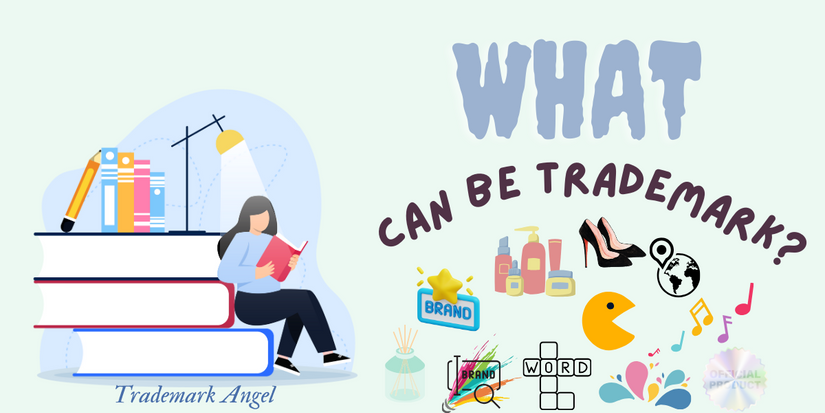 Trademarks are the backbone of brand identity and recognition. They are the unique symbols, names, and characteristics that set one brand apart from another. Have you ever wondered what can be trademarked? In this article, we'll delve into the incredible diversity of trademarks and explore the 19 fascinating ways that brands seal their signature styles. From word marks to smell marks, you'll discover the remarkable world of branding and intellectual property.
Trademarks are the backbone of brand identity and recognition. They are the unique symbols, names, and characteristics that set one brand apart from another. Have you ever wondered what can be trademarked? In this article, we'll delve into the incredible diversity of trademarks and explore the 19 fascinating ways that brands seal their signature styles. From word marks to smell marks, you'll discover the remarkable world of branding and intellectual property.
1. Word Marks:
Distinctive words, phrases, or letters used to identify a product, service, or company. Every time you see "Nike," or the words "TRADEMARK ANGEL," you immediately recognize the brand. These word marks are powerful tools in branding.
2. Design Marks:
Unique logos, symbols, or stylized graphics that represent a brand. A picture is worth a thousand words. Logos like the swoosh of Nike or the iconic Adidas stripes are instantly associated with the brand.
3. Slogans/Taglines:
Catchphrases or short statements that are closely associated with a brand. "Just Do It" by Nike and "Award-winning is nice, at less than half the price!" by TRADEMARK ANGEL are memorable slogans that stick in your mind.
4. Product Names:
Names assigned to specific products that distinguish them from others in the market. Products like the "PlayStation" by Sony or the "iPad" by Apple are not just names; they're brands themselves.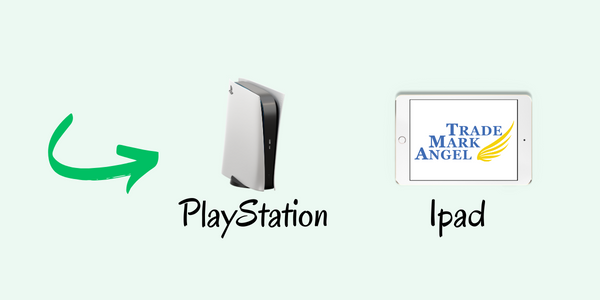
Service Names:
Names given to services that help identify and differentiate them. Amazon's "For Amazon sellers" service is a prime example of how a name can set a service apart.
Character Names:
Names of fictional or animated characters associated with products, services, or entertainment. From "BATMAN" by DC to "Spider-Man" by Marvel, these character names are trademarks in their own right.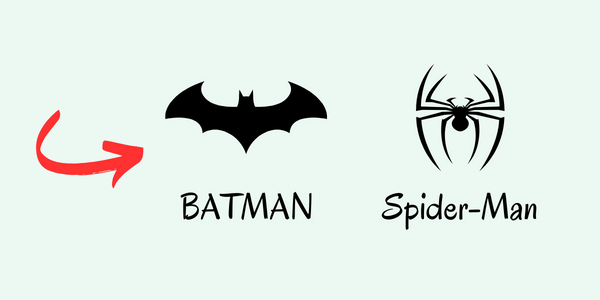
Color Marks:
Specific color(s) used in a unique and consistent way to identify a brand. Tiffany & Co's distinctive blue color is so iconic that it's instantly associated with luxury and elegance.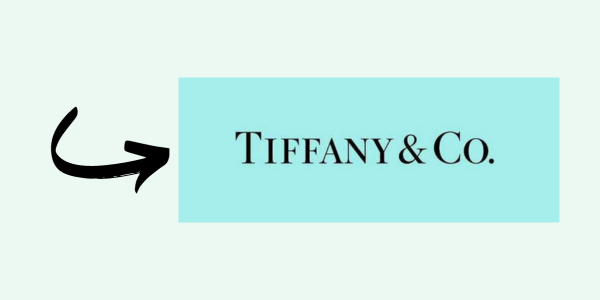
Sound Marks:
Unique and distinctive sounds, jingles, or musical notes that are used to identify a brand. The sound of Netflix or MGM's roaring lion intro is music to your ears, and it's also part of their brand identity.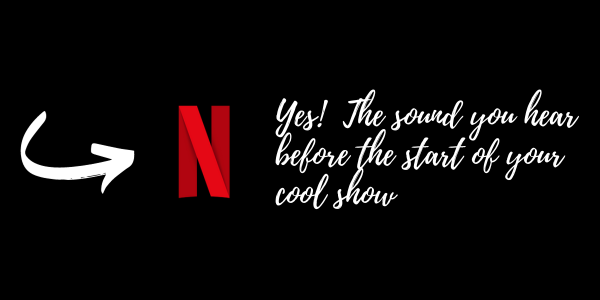
Motion Marks:
Distinctive moving images or animations that identify a brand. From animated GIFs to unique video intros, motion marks are an exciting way to capture a brand's essence.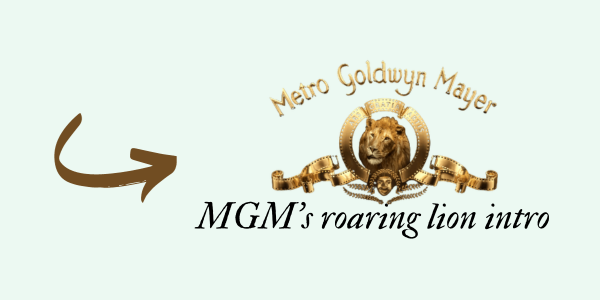
3D Marks:
Trademarks for three-dimensional shapes that are distinct and recognizable. The Coca-Cola bottle's iconic shape and Toblerone's triangular chocolate bar are examples of 3D marks.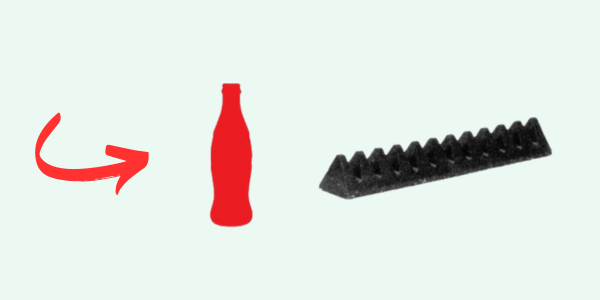
Hologram Marks:
Trademarks for holographic images that represent a brand. The holographic American Express card is a standout example, showcasing innovation and sophistication.
Position Marks:
Trademarks for specific placements of logos or marks on products. The iconic red soles on Louboutin high heels or the Levi's tag on back pockets make for memorable brand identifiers.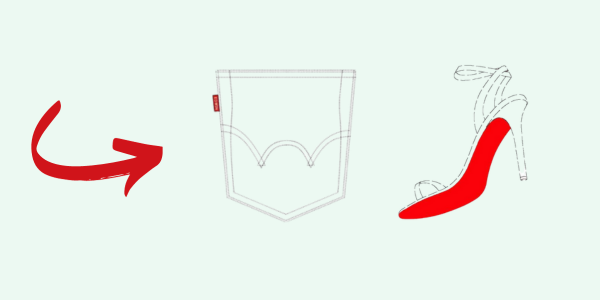
Pattern Marks:
Repeating visual patterns that are distinct and associated with a brand. Louis Vuitton's patterns are renowned for their unique and instantly recognizable designs.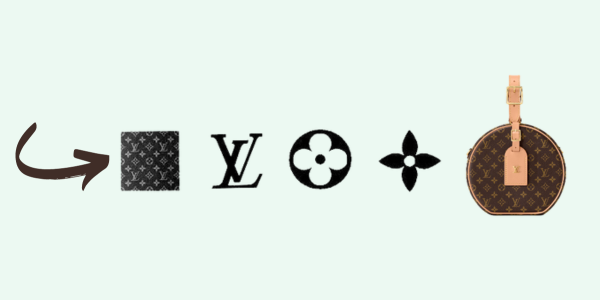
Trade Dress:
Distinctive visual elements, such as the overall look and feel of a product's packaging or the layout of a store. The AIR Jordan's unique aesthetic and style set it apart from other brands.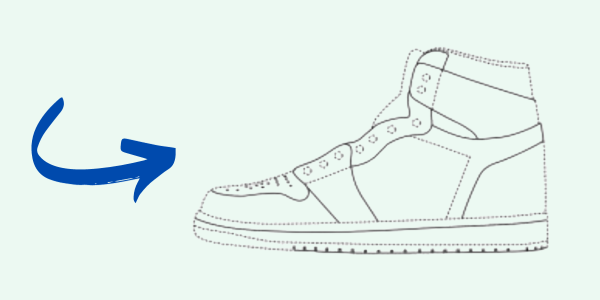
Domain Names:
While not traditional trademarks, domain names that are used to identify a website or online presence can have trademark-like protection. Our domain, "trademarkangel.com," is not just an address; it's part of our brand identity.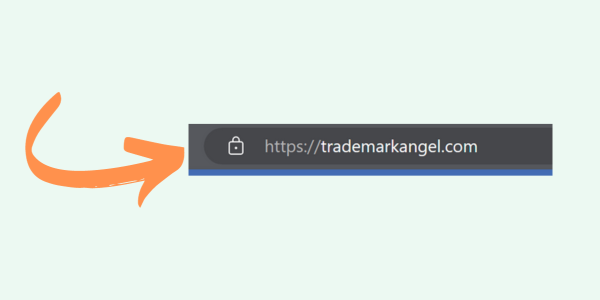
Certification Marks:
Used to indicate that certain standards or qualifications have been met by a product or service. An FDA APPROVED certification is a symbol of safety and quality.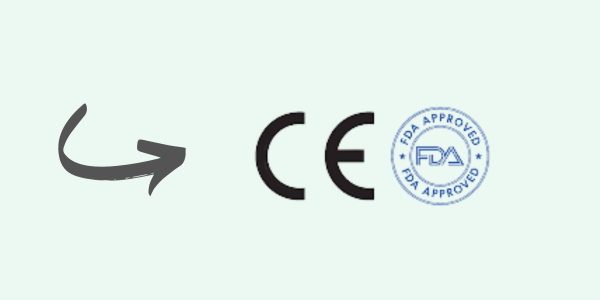
Collective Marks:
Used by members of a collective group or organization to indicate membership. Brands like Cambridge University Press or the Mongols have a unique way of showing their affiliations.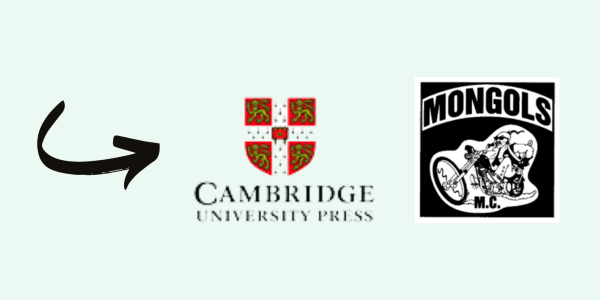
Geographical Indications:
Used to identify a product as originating from a specific geographical location. Champagne, Greek Feta Cheese, and Italian Parma Ham are all protected by geographical indications.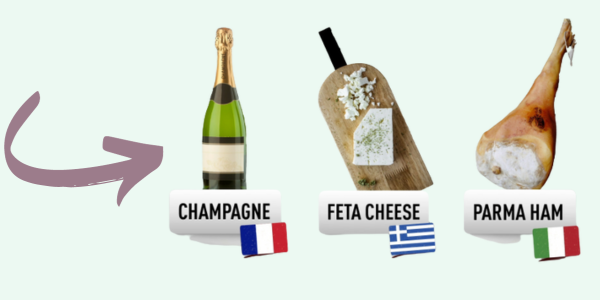
Smell Marks:
In some cases, distinctive and non-functional smells associated with products can be trademarked. The "Flowery Musk Scent" in Verizon stores is an olfactory experience associated with the brand.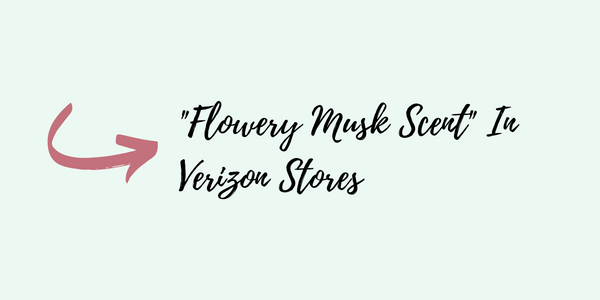 These 19 types of trademarks showcase the diversity and creativity that brands employ to stand out in the market. Each trademark tells a unique story, making it essential for brand protection and recognition.
Share this article with your friends who might find this information valuable in their brand-building journey.
By Siham Qoudhadh |October 18th, 2023| Trademark Angel
These 19 types of trademarks showcase the diversity and creativity that brands employ to stand out in the market. Each trademark tells a unique story, making it essential for brand protection and recognition.
Share this article with your friends who might find this information valuable in their brand-building journey.
By Siham Qoudhadh |October 18th, 2023| Trademark Angel
To open in a new tab, click: Exploring the Fascinating World of Trademarks: 19 Ways Brands Seal Their Signature Styles
Can't find the answer that you are looking for?
Submit your question with your email -
- Trademarks that are descriptive of the products or product quality (for example, TASTY PEARS cannot be registered for fruits)
- Full names and surnames unless they have acquired a secondary meaning (for example, TAYLOR may be registered trademark as it has a secondary meaning but Anderson may be unregistrable since it's only a surname)
- Names of products that you registering, even in a foreign language (for example, you can’t register КРЕМ for creams as КРЕМ means CREAM in English when translated from Russian)
- Places of origin. You can’t register French Candy for candy and chocolate originating from France.
- Trademarks identical to Official government marks (aka Official marks), emblems, flags.
- Obscene and offensive trademarks (for example, CANADIAN AS FUCK is unregistrable whereas FCUK is registrable)
- Portraits and signatures or living or dead individuals
- Trademarks that are too close to another previously filed or registered trademark
- Trademarks that are merely informational (for example, BLACK LIVES MATTER)
To open in a new tab, click: What can’t be registered as a trademark in Canada?
Can't find the answer that you are looking for?
Submit your question with your email -
A Power of Attorney, POA in short, is a legal document that authorizes an entity to represent or act for another person, usually, in the managing of the person’s property, business or private affairs. The former is called the Attorney or Agent whereas the latter is commonly known as the Principal.
In Trademarks, a Power of Attorney is required to appoint an Attorney on your file so he/she can represent you before the respective Trademarks Office.
Having said that, in many countries including the US, UK, Europe, Canada and Australia you don’t need to sign a POA for a standard trademark application (power of attorney is already implied when you entrusted your attorney/agent trademark registration). However, there are countries, such as, China, Mexico, Russia and India where a POA signed by the owner or any other person legally bound to the owner is required in order to file a trademark application.
In the US, when an applicant wishes to replace its existing attorney and appoint a new attorney, it needs to sign a Power of Attorney authorizing the new attorney to prosecute the trademark application.
To open in a new tab, click: What is a power of attorney? When do I need to sign a power of attorney?
Can't find the answer that you are looking for?
Submit your question with your email -
There are 3 ways how you can proceed:
- Book an initial phone call with us. Here is the link for the trademark package
- Ask for a free preliminary trademark search to get an idea of whether your trademark can be registered. This is a basic search but if your mark is unregistrable, we'll be able to tell you. Order your search here.
- Buy a trademark package right away to start the trademark registration process without further delay. You can see our pricing on this page and can buy directly from our website.
What happens after I buy a trademark package?
- We'll confirm your order.
- We'll check if your trademark is registrable. A comprehensive trademark search will be done at this stage. We will provide detailed recommendations on how to increase the chances of achieving registration if your trademark turns out to be problematic.
- If your trademark is registrable, we'll move forward with the trademark registration process.
- If your trademark has low chances of achieving registration, you will have 3 options:
- Ask for a full refund;
- Come up with a different name. We will provide detailed instructions for this. Further trademark searches are included in the package and there is no extra cost. We'll keep searching until we find a registrable trademark;
- Proceed with the filing anyway.
The choice is yours. Make the first step now.
To open in a new tab, click: How does the process work with Trademark Angel? What happens after I buy a trademark package?
Can't find the answer that you are looking for?
Submit your question with your email -
As of August 3, 2019, the United States Patent and Trademark (USPTO) now requires foreign domiciled applicants (read: non-US applicants) and registrants to appoint a US attorney on all US trademark filings and representations before TTAB. We work with a few trusted US attorneys so can file and take over your recently filed trademark applications. If you filed yourself, we can take over your application and appoint a US licensed attorney, at no cost to you.
Since this is how we always filed, our fees remained the same unlike many other firms that increased their fees following the introduction of this new rule.
In every country where we file, a licensed attorney or trademark agents submits your trademark application so that you get proper legal representation.
To open in a new tab, click: Who will file my trademark application?
Can't find the answer that you are looking for?
Submit your question with your email -
The fastest guaranteed way to get a trademark registered for Brand Registry is to file a word mark (without logo) or a logo in Germany using the accelerated examination option. It takes up to 4 weeks with the accelerated examination option and about 2-3 months with regular examination.
We always file electronically so this ensures the fastest processing of the trademark application.
Also, in our experience, trademarks filed in a single class results in the quickest registration.
Filing in the UK or the EU will also ensure a quick entry into Brand Registry (about 3.5-4 months).
To open in a new tab, click: What is the fastest way to obtain a trademark for Brand Registry purposes?
Can't find the answer that you are looking for?
Submit your question with your email -
We can help you to reinstate your Amazon seller account.
As reasons for suspension can be different, please contact us with your details to get a custom flat-fee quote. Our prices are very reasonable and very competitive.
1. How long does it take to write an appeal?
A: Please allow 7-14 days to prepare an appeal after we receive all the requested information.
2. What information do you need to start working on the reinstatement?
A: We will need some information from you and we'll also need your support as we continue working on the reinstatement.
We'll need: Seller Performance Notifications, you will also be involved as we need to ask more questions to understand the situation and assess if we can help you as not all suspensions are the same. We need access to the account specific to MYI, Seller performance notifications, A-Z Guarantee Claim, Orders, Buyer Seller Messages and Seller Metrics.
3. Can you reinstate my entire account as well as my ASIN listings?
A: Yes, the main goal is to reinstatement your Amazon account. Once this is done, the listings will be reinstated as well.
4. Can you guarantee reinstatement?
A: With Amazon account suspensions, nobody can give you 100% guarantee as we depend on Amazon. Our success rate is 75% for accounts reinstatement.
To open in a new tab, click: My Amazon account has been suspended. Can you help?
Can't find the answer that you are looking for?
Submit your question with your email -
There are a few ways how you can prevent others from hijacking your Amazon listing. There are also various methods how you can remove hijackers from your listings.
To describe, there are 3 ways to remove hijackers:
- deal with Amazon through their support center (not always effective and can be time-consuming as you often need to do a test buy);
- legal way through cease and desist letters and often with an attorney representation (can be expensive and not always effective);
- other ways, when you know somebody in Amazon who can help your case (quick and effective, but you need to have connections).
To open in a new tab, click: Can you help with hijackers on my Amazon listing?
Can't find the answer that you are looking for?
Submit your question with your email -
When deciding whether to file for either a word mark or logo, it is important to keep in mind that a logo must always be used as it is depicted in your application. In addition, if you file your logo in a particular color in the US, you must always use your logo in that particular color.
On the other hand, word marks are somewhat more flexible. When filed in all capital letters, word marks allow the trademark owner to display it in any combination of lower case and upper case letters.
For example, if you filed for the word mark TRADEMARK ANGEL ROCKS, you can use it on your goods and/or services as: trademark angel rocks, Trademark Angel Rocks, or TraDeMaRk AnGeL RoCkS.
The flexibility of a word mark ultimately makes it quite appealing as it is not limited to a particular font or color and can be displayed in a combination of upper and lower-case letters.
However, filing for a logo can be more advantageous in some situations.
For example, if your mark is found to be descriptive of your goods/services or uses generic words, your mark will generally be limited to the Supplemental Register. A distinct logo, however, can “carry” the mark to the Principal Register despite the descriptive nature of your mark.
Let’s say you want to file for TRADEMARK REGISTRATION CO. for a company that offers trademark registration services. That’s a mark that is descriptive of the services offered, and will therefore would be limited to registration to the Supplemental Register. If this same mark was filed with a distinctive logo, for example:
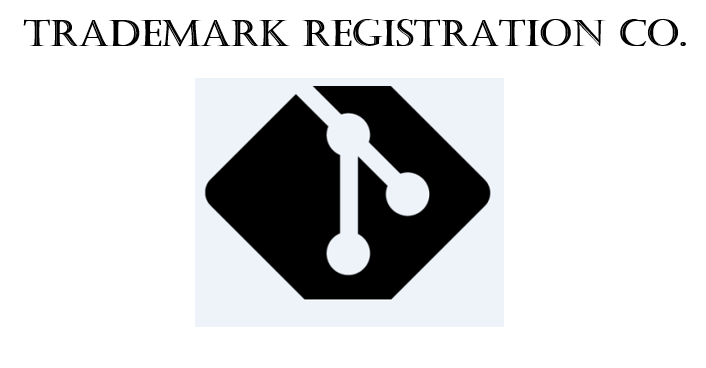 Then, the logo could provide sufficient distinctiveness to allow registration of TRADEMARK REGISTRATION CO. onto the Principal Register (with a disclaimer for “TRADEMARK REGISTRATION CO.”).
Another situation when filing for a logo is advantageous is when there are similar marks. For example, a client wanted to register the mark HAWQUE with a design element of a flying hawk
Then, the logo could provide sufficient distinctiveness to allow registration of TRADEMARK REGISTRATION CO. onto the Principal Register (with a disclaimer for “TRADEMARK REGISTRATION CO.”).
Another situation when filing for a logo is advantageous is when there are similar marks. For example, a client wanted to register the mark HAWQUE with a design element of a flying hawk 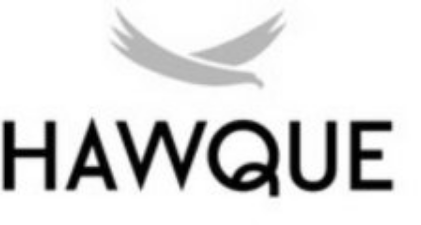 - for computer software connecting customers to security contractors, in Class 9. We advised that the logo will most likely be registrable but the wordmark alone would be too similar to marks containing the word HAWK providing similar products in the same class. Although we received an office action alleging that the HAWQUE logo mark was confusingly similar to a registered wordmark, HAWQ, that also covered Class 9 computer software, we were ultimately able to overcome the objection. Our client’s logo, HAWQUE, was successfully registered soon after.
In another case, a client wanted to register the mark ESTEEM APPAREL, either the word mark or the logo. However, in our initial search, we found a very similar, registered mark, ESTEEM CLOTHING. In this case, we advised that the logo would have a greater chance of registration. The client chose to file for the logo
- for computer software connecting customers to security contractors, in Class 9. We advised that the logo will most likely be registrable but the wordmark alone would be too similar to marks containing the word HAWK providing similar products in the same class. Although we received an office action alleging that the HAWQUE logo mark was confusingly similar to a registered wordmark, HAWQ, that also covered Class 9 computer software, we were ultimately able to overcome the objection. Our client’s logo, HAWQUE, was successfully registered soon after.
In another case, a client wanted to register the mark ESTEEM APPAREL, either the word mark or the logo. However, in our initial search, we found a very similar, registered mark, ESTEEM CLOTHING. In this case, we advised that the logo would have a greater chance of registration. The client chose to file for the logo 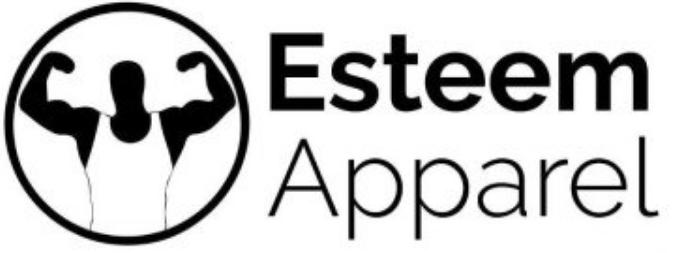 instead of the word mark and, although we received a confusion objection based on similarity with ESTEAM and ESTEEM CLOTHING marks, we were able to successfully able to overcome the objection and the mark was successfully registered.
Since the client protected the logo
instead of the word mark and, although we received a confusion objection based on similarity with ESTEAM and ESTEEM CLOTHING marks, we were able to successfully able to overcome the objection and the mark was successfully registered.
Since the client protected the logo  , he now cannot use Esteem Apparel side by side, without the image, in a different font or in ALL CAPITAL letters: ESTEEM APPAREL. On the other hand, if word mark had been filed - ESTEEM APPAREL, he could have used it in ALL CAPITAL LETTERS, in any font, side by side or one word above the other. Logo makes the trademark inflexible and you should not be making even small changes in your use.
In addition, in some cases, one has to file for a logo if the trademark is broken/separated by images or symbols. Please check our article that talks more about it.
Thus, as can be seen from the above examples, it is important to first determine if your mark is too descriptive to achieve registration in the Principal Register, and whether you intend to consistently display your logo on all of your products, prior to making a decision regarding whether to file for a word mark or a logo. Also, in case there are similar marks, filing for the logo may help to differentiate and ultimately achieve registration of your mark.
, he now cannot use Esteem Apparel side by side, without the image, in a different font or in ALL CAPITAL letters: ESTEEM APPAREL. On the other hand, if word mark had been filed - ESTEEM APPAREL, he could have used it in ALL CAPITAL LETTERS, in any font, side by side or one word above the other. Logo makes the trademark inflexible and you should not be making even small changes in your use.
In addition, in some cases, one has to file for a logo if the trademark is broken/separated by images or symbols. Please check our article that talks more about it.
Thus, as can be seen from the above examples, it is important to first determine if your mark is too descriptive to achieve registration in the Principal Register, and whether you intend to consistently display your logo on all of your products, prior to making a decision regarding whether to file for a word mark or a logo. Also, in case there are similar marks, filing for the logo may help to differentiate and ultimately achieve registration of your mark.
To open in a new tab, click: Which trademark should I File? Word Mark or Logo?
Can't find the answer that you are looking for?
Submit your question with your email -
What is the difference between company name, business name, domain name and brand or trademark?
What are different types of company, domain, business or brand names? Let's get the names straight to avoid confusion.
- Company name: Legal name of the company, either registered federally or in a certain state (or province in Canada).
- Business name or doing business as: Name under which you conduct your business.
- Domain name: Name of your address on the Web.
- Trademark: A trademark may be one word, a combination of words, or logos (or even sounds and smells!) used to distinguish/differentiate your products or services from those of other entities.
, or a combined mark:
Example: SKYPE,
Let's take another example of a giant retailer Kraft Foods. Company name: Kraft Foods Inc. 12 of Kraft Foods brands are sold worldwide: Cadbury, Jacobs, Kraft, Maxwell House, Milka, Nabisco, Oreo, Oscar Mayer, Philadelphia, Trident and Tang. For each brand Kraft Foods has a website: cadbury.co.uk; cadbury.com.au; oreo.com; oscarmayer.com, etc. Not everyone knows that these 12 famous brands are owned by the same giant! It doesn't really matter, what matters is that everyone knows where do buy their favorite Cadbury chocolate or Oreo cookies and everyone knows how the Oreo cookies package looks like!
To open in a new tab, click: What are different types of names? Company name vs business name vs domain name vs trademark?
Can't find the answer that you are looking for?
Submit your question with your email -
If you simply business incorporate or register a corporate name, it doesn't mean that the government approved for you to use the name as a trademark.
If we take a US LLC, as an example, every state has its own laws about business names.
You can register your LLC name in Delaware but the business name registration has no impact on the other 49 states.
In plain English, if you register Coolapples LLC in Delaware, another entity may register Coolapples LLC in Indiana. If you plan to expand nationwide or worldwide, trademark registration will provide that protection. A federal US trademark will give you exclusive rights to use your brand name for your products across the US. Likewise, a Canadian or Australian trademark will give you country-wide rights to use your chosen brand in your country and will make it easier for your to sell or license your trademark later.
To open in a new tab, click: Do I need to register a trademark if my business incorporated?
Can't find the answer that you are looking for?
Submit your question with your email -
A UK trademark only protects you in the UK, which consists of England, Scotland, Wales and Northern Ireland. There is no protection outside of the UK. A UK trademark is filed in the UK Intellectual Property Office (UKIPO).
A trademark filed in the EU Intellectual Property Office (EUIPO) is called an EU trademark (formerly known as a CTM (Community) trademark).
EU trademark protects you in the 28-member countries of the EU making it a very strong trademark. Current EU countries are: Austria, Belgium, Bulgaria, Croatia, Republic of Cyprus, Czech Republic, Denmark, Estonia, Finland, France, Germany, Greece, Hungary, Ireland, Italy, Latvia, Lithuania, Luxembourg, Malta, Netherlands, Poland, Portugal, Romania, Slovakia, Slovenia, Spain, Sweden and the UK.
To open in a new tab, click: What is the difference between a UK and EU trademark?
Can't find the answer that you are looking for?
Submit your question with your email -
It’s perfectly legal for you to use your trademark without registration. However, if you are using a trademark that is similar to another name that was adopted before you adopted your trademark, you may be liable for trademark infringement.
To minimize the risk of choosing a trademark that's similar to another name, you should do a trademark search of the Trademark Office database of the country where you plan to use your brand and of the marketplace (check on Internet for similar names usage).
To open in a new tab, click: Can I use my trademark if it isn’t registered?
Can't find the answer that you are looking for?
Submit your question with your email -
Camila runs a fitness and cycling studio. She has developed a unique way that allows her members to lose weight while doing yoga exercises combined with cycling intervals.
Her business has grown exponentially and Camila has recently completed registration of her trademark JENRIDE and of her logo. She also thinks about licensing her program.
She has a lot of clients and good social media presence. Her members have even started calling themselves jenriders to indicate that they belong to Camila’s fitness movement.
Camila really wants to protect her trademark and is a little concerned that her trademark is improperly used so she comes to Trademark Angel for a consultation.
Camila: I need to know how to properly use my trademark JENRIDE.
Trademark Angel: Now that your trademark is registered, it is advisable to put ® symbol next to your trademark and logo to indicate you use them as brands. You can put TM symbol even if your trademark is not registered.
Camila: I am confused how to refer to my trademark.
Trademark Angel: A trademark should be used distinctively. Always capitalize the first letter or capitalize the whole word. So it should be Jenride or JENRIDE. To make the name stand out you can bold it, put it in italics or underline it.
Camila: What about referring to my mark on our promotional and advertising materials?
Trademark Angel: Put an ownership statement on the bottom of your flyers, class schedules, promotions and on your website, like this: JENRIDE® is a registered trademark owned by Jendride Fitness Inc.
Camila: Got it. I also plan to license my program. How should my licensees refer to my brand?
Trademark Angel: Easy. Your licensees should use a proper disclaimer: JENRIDE and JENRIDE logos are trademarks of Jenride Fitness Inc. Used under license.
Camila: Ok. My program is popular so on Facebook our members even refer to this form of exercise as “jenride”, like “I am going to jenride today”. Isn’t it cool?
Trademark Angel: It’s not cool at all. You should never use JENRIDE as a verb to describe your program. This may invalidate your mark. Teach your members to say “I love the JENRIDE program” rather than “I love to jenride”. They should use a noun after your trademark: JENRIDE program, JENDRIDE class.
Camila: I get it. What about changing the name slightly? Some people call it “jendrive” or “yenride”.
Trademark Angel: Do not change the spelling, the trademark or the actual logo. This may invalidate your marks. To stay valid they should be used exactly as registered.
Camila: Wow, so many rules.
Trademark Angel: The strength of many famous trademarks has been lost as their owners didn’t take proper care and didn’t educate the public about proper trademark use. Some famous names that were once trademarks are now common or generic as consumers perceive these trademarks not as a product from a single source but rather an identification of a product type or product category.
Camila: Really? Like which ones?
Trademark Angel: Aspirin, Cellophane, Escalator, Flip phone, Videotape, Linoleum, Thermos were all registered trademarks but have lost their trademark status.
Camila: I will implement your guidelines. I wish I could remember them!
Trademark Angel: To make it easy to remember, here is a little handout to help you remember.
Camila: Thanks, it was helpful. Would you like to join our JENRIDE class today?
Trademark Angel: With pleasure!
Trademark Usage Rules - booklet
https://www.youtube.com/watch?v=L8PEHSR8I5c&t=1sTo open in a new tab, click: How not to invalidate your trademark: proper trademark usage rules
Can't find the answer that you are looking for?
Submit your question with your email -
The general rule is that book titles (unless part of a series) cannot be registered as trademarks. Trademarks are really meant to function as the identifiers (source) of goods and services, and book titles don’t really fulfill this function.
In the US, one cannot trademark a title of a single creative work. If you have a series of books, then this series can be trademarked.
It’s always best to read what the actual law says about it. You can check out this useful article in the USPTO website: "Title of a Single Work" Refusal and How to Overcome This Refusal
As the US Trademark Manual of Examining Procedure says:
"The title, or a portion of a title, of a single creative work must be refused registration under §§1, 2, and 45 of the Trademark Act, 15 U.S.C. §§1051, 1052, and 1127, unless the title has been used on a series of creative works. The title of a single creative work is not registrable on either the Principal or Supplemental Register."
To put it in plain English: You cannot trademark the name of a single creative work. For example, if you write one book called “FOR DUMMIES” then you will not be able to trademark this title. However, you can trademark a book title if you write a series of books using that title. In the example above, the name “FOR DUMMIES” could be trademarked if you wrote more than one book with that title, since it would no longer be considered a “single” creative work. So, you could have a series of books "FOR DUMMIES" and individual titles of these books may be "Auto repair", " Football", "Personal Finance", etc. The same rule goes for the EU and UK. In Canada, however, it's different and you can trademark book titles even if it's just one book.To open in a new tab, click: Can you trademark book titles?
Can't find the answer that you are looking for?
Submit your question with your email -
Trademark rights are limited to the goods or services for which your trademark is registered. While you may have exclusive rights over your mark for certain goods or services, another company may legitimately use the same trademark for goods or services which are not similar.
For example, you may have a trademark FOREVER GREENY for garden tools and another company may register a trademark for FOREVER GREENY for mining software or gas station. As the industries are unrelated, there is no confusion so mark can co-exist.
Most countries follow the system of International Classification of Goods and Services which divides goods into 34 classes and services into 11 classes.
You may apply to register your trademark in more than one class.
Please note that some countries require separate applications for each class of goods or services (Mexico is a notable example).
To open in a new tab, click: When I register a trademark for one type of goods or services, do I get exclusive rights to use that trademark for all goods and services?
Can't find the answer that you are looking for?
Submit your question with your email -
You can license your trademark to another person or another company. Please keep in mind that marks establish a connection between the mark and the goods (or services) and are considered as an indication for certain quality and reputation.
It is important that your licensee maintains the same quality and reputation.
To make sure it happens, you should be closely involved with the proper use of that mark by your licensee.
It is best if you have a written license agreement in place to provide for effective control by the licensor. The license agreement may be considered invalid if it does not provide for quality control or if such quality control is not carried out.
Trademarks must be used in order to stay valid. Proper use by a licensee is considered to be use of the mark by the owner.
Close involvement and control of the use of the mark by the licensee is also important for satisfying the requirement of use.
If you are planning to license your trademark to somebody, Trademark Angel can help you with a license agreement.
To open in a new tab, click: Can I allow someone else to use my trademark?
Can't find the answer that you are looking for?
Submit your question with your email -
The term "common law" indicates that the trademark rights are developed through use and not governed by statute.
Trademark common law rights attach to a trademark once the trademark is associated with your products or services in a geographical area.
In Canada and the US, if a business that does not register its trademark, it can still have first priority on the name in the geographic area in which it sells its products or offers its services if it was the first to establish common law trademark rights (i.e. if it was the first one to use this particular trademark).
How do you establish common law rights?
Start a business and sell products or services under your brand (trademark). It is pretty simple.
Because common law rights arise as soon as you begin using your mark, simply offering for sale products or services will begin to establish trademark common law rights.
These are trademark rights that are enforceable in courts. However, without a trademark registration, your damages may be limited.
Further, common law trademark rights are based on first use. If you are trying to sue someone with a similar name make sure you are the first user. If you are not the first user, you will be the one who may be infringing, and you will be the one who will need to re-brand.
Benefits of common law trademarks
Common law trademarks stop competing businesses in your area / geographic location from using an identical or similar trademark that could confuse or mislead potential consumers. You can sue a local competitor for damages if they start using your mark. If you win, the other business will also have to stop using your mark.
If you're the only one using the trademark, there is no confusion among consumers. Customers won't accidentally visit a competitor shop believing it's somehow linked to yours.
Common law trademark have limitations
Common law trademark rights are limited to the geographic area in which the mark is used.
For example, if you sell doughnuts in the vicinity of Orlando, Florida, the trademark rights to that name exist only in Orlando, Florida.
If another doughnut retailer starts selling different types of doughnuts in Detroit under the same name (assuming their use was bona fide), then there would be no trademark infringement.
However, if the Detroit company tried to sell their doughnuts on a federal level, they would discover that the Florida company's common law rights to the mark may prevent them from entering the Florida market.
To open in a new tab, click: What are “common law” trademarks?
Can't find the answer that you are looking for?
Submit your question with your email -
Trademarks may be filed at the state or federal level.
State trademarks protect your mark in a specific state while federal trademarks protect your mark in all the states.
State trademarks generally provide less legal protection than federal trademarks.
Businesses operating in only one state should trademark in that state. Businesses operating in interstate commerce may file for a federal trademark.
For example, if you operate a restaurant or a hair-dressing salon in Florida, you are not eligible for a federal trademark. In this case, you should apply for a trademark in the state of Florida. However, if you have two or more restaurant locations in more than one state, in our case, one in Florida and one in Georgia, you are eligible for a federal trademark.
A business intending on expanding nationally or internationally should conduct a trademark search and file a federal trademark as soon as possible.
To open in a new tab, click: What is the difference between State and Federal Trademarks?
Can't find the answer that you are looking for?
Submit your question with your email -
You may file trademark application as soon as you have decided to sell products or services in connection with your trademark.
A trademark application can be filed either on the basis of future use or actual use in the US and Canada. In the European Union and the UK, you do not have to specify whether your trademark is in use or not at the filing.
We recommend filing trademark applications at an early stage to ensure that marketing, labeling and production expenses are not wasted on trademarks that are not registrable.
A successful trademark application will ensure that your trademark is truly available to use, and you’re not taking someone else’s mark.
Also, registering a trademark will help prevent anyone else from trying to use the same or confusingly similar trademark.
To open in a new tab, click: Is it possible to file a trademark application before you have started selling products or services?
Can't find the answer that you are looking for?
Submit your question with your email -
Trademarks can last forever if they are renewed on time. Keep in mind you will have to continue using your trademark to keep it in good standing.
In the US, you must renew your trademark every 10 years. The 10 year term is counted from the registration date. In addition, between the 5th and 6th year after the registration date, you must file an "affidavit of use" to keep the registration alive.
In European Union, Germany, the United Kingdom, India and Australia, you have to renew your trademark every 10 years. The 10 year term counts from the application date.
In China, trademarks have to be renewed every 10 years. The renewal period is counted from the date of registration.
In Canada, a trademark has to be renewed every 10 years (the renewal period was changed from 15 to 10 years in June of 2019). The 10 year term counts from the registration date.
To open in a new tab, click: How long are trademarks valid for?
Can't find the answer that you are looking for?
Submit your question with your email -
Here we rank the countries where we file from the fastest to the slowest.
1. Germany is the fastest country and overall champion. It takes 1-3 months, on average to register a trademark in Germany. With accelerated examination, most trademarks register within a month. So this is a clear champion in terms of speed. Sometimes Germany can be a little unpredictable as it can take a month for one trademark and 3 months for another trademark.
2. One of the fast and most predictable in terms of timeline is the United Kingdom, where it takes about 3.5-4 months from filing to registration. Added bonus is low government fees.
3. In the European Union, the registration process is about 6-7 months. Not so bad, but the government fees are very high. If your application is filed using "fast-track" method, then the whole process takes about 3.5-4 months. We always EU applications using "fast-track" so European Union is very comparable to the UK (maybe a little slower).
4. It takes about 4-8 months to register a a trademark in Mexico but it can be somewhat inconsistent in terms of the time (sometimes it takes 4 months and sometimes more than 8 months).
5. You will have to wait for about 7.5-8 months to register a trademark in Australia unless we get an objection. Usually most trademarks register within a year or less.
6. In China, it takes 9-12 months to register a trademark if there are no complications. However, if there is an objection and we have to appeal, registration will be delayed by 8 months. China is determined to make the overall registration process faster, so it's possible that in 2020 this timeline will be shorter.
7. India is similar to China in terms of timeline. On average it takes 10 months to get a registration certificate if there are no problems during the process.
8. It takes a minimum of 12-14 months to register trademark in the US. If there are office actions (objections from the Trademarks Office), then registration will be delayed. It's not uncommon for a registration to take a year or longer.
9. In Japan, it may take from 10 to 14 months for a trademark to register.
10. In Brazil trademark registration process takes on average 12-18 months. It's a pretty long time.
11. The last place is unfortunately taken by Canada. It takes 36-42 months to finish the registration process. If there are objections the overall registration process takes even more time. It's painfully slo-o-ow. Don't ask us why. We don't know the answer. We feel your pain though. Hopefully, as Canada joined Madrid protocol things will improve. We don't know if and when they will improve. Ever since pandemics began the whole process delayed even more (other countries haven't been affected so badly).
To open in a new tab, click: How long does it take to register a trademark?
Can't find the answer that you are looking for?
Submit your question with your email -
If you pick somebody else's trademark and use it to market and sell your products or services, it may be considered trademark infringement.
Trademark infringement is a strict liability offense. What this means is that whether you intended to infringe or not is irrelevant.
For example, if you didn't know that there was a registered trademark and used it to market your products, hence, you infringed on a registered trademark and you are liable. Also, if you believe your use of somebody else’s trademark is fair use, but it isn't, you're liable.
Lesson to learn: always do a proper trademark search before selecting a trademark for use and registration!
https://www.youtube.com/watch?v=TWaahZ8gqug
To open in a new tab, click: Can I pick somebody else’s registered trademark for use?
Can't find the answer that you are looking for?
Submit your question with your email -
Descriptive trademarks are not registrable in many countries, including Canada, Australia, European Union and United Kingdom. So if your trademark is descriptive and you are filing in one of the countries listed above, it's best to come up with another name.
In the US, they may be registered on the Supplemental Register - a special place where descriptive trademarks are registered.
The Supplemental Register does not cover the same legal bases of the Principal Register, but it is capable of legally distinguishing your business’ goods and services and offering you protection.
We discuss Supplemental Register in detail in our article.
https://www.youtube.com/watch?v=nRgpUwnxsbQ&feature=youtu.be
To open in a new tab, click: My trademark is descriptive. What should I do?
Can't find the answer that you are looking for?
Submit your question with your email -
It depends.
Even if a trademark is expunged, it doesn’t mean it’s no longer in use. If the trademark in question is still used by the owner, then he/she may still have common law rights. That means that when you file your trademark application, once it’s published for opposition purposes, the owner of the expunged registration may oppose registration of your mark on the ground of prior use. And he may win!
If you use your trademark without filing for a trademark, then it’s still possible for the owner of the expunged trademark to sue you, again on the grounds of prior use.
If the expunged mark is no longer in use, then you should be safely provided there are no other confusingly similar marks.
https://www.youtube.com/watch?v=Yz_bZ9SLMJA&feature=youtu.beTo open in a new tab, click: Can I use a trademark if it has been cancelled, abandoned or expunged?
Can't find the answer that you are looking for?
Submit your question with your email -
Registering a trademark is a time-consuming and complicated process. That’s why the Canadian Trademarks Office recommends hiring a registered agent. A full list of a trademark attorney can be found here: http://www.ic.gc.ca/cipo/mc-tm/agents.nsf/tmagents-eng?readform&wt_src=cipo-tm-main.
Following August 3, 2019 changes in the US, non-US domiciled applicants must now hire a US attorney in order to file their trademark in the US.
In fact, in most countries where you file a local attorney is necessary.
A trademark professional will help you by:
- Conducting a proper trademark search to determine if your trademark can be registered.
- Increasing your chances of getting your trademark registered by a trademark attorney. A 2013 Wall Street Journal article reports that register trademark applicants represented by a trademark professional are 50% more likely to get through the registration process than those who go it alone. Although this is a US article, I am sure statistics in Canada is similar. https://blogs.wsj.com/law/2013/04/10/when-it-helps-to-have-a-lawyer/
- Saving you time—a trademark professional will monitor all Trademarks Office updates, leaving you time to run your business. A trademark lawyer/agent will also correspond with foreign associates on your behalf if you file in other countries.
- Saving you money— if you file incorrectly, your trademark will be refused and you will have to pay additional fees to re-file. If you have already spent time on your brand, such as website, business cards, stationery, advertising, you will have to re-brand and this will be expensive.
- Giving you invaluable advice when you need it.
- Helping you to sleep soundly at night – a weak trademark will leave you vulnerable to receiving a “cease and desist” letter and to court actions.
To open in a new tab, click: Why should I hire a trademark attorney? Why should I hire a trademark agent? Can I register trademark myself?
Can't find the answer that you are looking for?
Submit your question with your email -
In Canada, there are no marking requirements.
However, it’s wise to use them to indicate ownership of your trademarks.
Trademark owners can indicate ownership or registration of their trademark through certain symbols, TM (trademark) or ® (registered trademark).
The TM symbol can be used with a trademark regardless of whether it is registered, as long as it is being used in association with products or services. TM symbol is used to indicate that you use your brand as a trademark. When I use TM symbol for my trademark, that makes no claims as to its registration status.
The ® symbol is used once the trademark is registered.
In the US, use of the federal registration symbol is regulated by federal law. One should only use ® symbol for federally registered trademarks.
How should you use trademark symbols?
In written documents (on your website, promotional materials or articles), it is only necessary to use a marking symbol when you mention your trademark for the first time or with the most prominent placement of your trademark (for example, in the header or title).
Most people mistakenly think that you have to use marking symbols every time you mention the trademark. Using marking symbols too much makes it more difficult to read your materials, so don’t overuse.
P.S. How do you type TM and ® symbols?
Easy, if you have Windows, simply press ALT+0174 to get ® and ALT+8482 or ALT+0153 to get TM.
Should you use trademark symbols?
We think you should. There are two reasons why.
First, the symbols provide notice to the public that you are claiming the symbols as trademarks and this will hopefully deter others from using your trademark for their business. Secondly, if you ever have to sue somebody for trademark infringement and you haven’t used the statutory notice (i.e. the ® symbol), then you may not be able to sue for damages or profits unless you can prove that the infringer had actual notice of your trademark rights. So our take on this - use trademark notice!
https://www.youtube.com/watch?v=jvkaIZT-iag
To open in a new tab, click: When and how can I use my trademark symbols?
Can't find the answer that you are looking for?
Submit your question with your email -
A trade name is a name under which you conduct your business. A trade name can act as a trademark if it is used to identify goods and services of that business.
Example: let us suppose that you sell headphones and your company is called “To The Moon Headphones Ltd.”
Scenario A: Customers come to you because they know your name “To The Moon Headphones Ltd.”. You use your company name as a trademark and you place it on your headphones or packaging. In this case trade name vs trademark, your company name is also your trademark.
Scenario A: Customers come to you because they like your headphones which you have called “Blue Rocket”. This is how you advertise and sell your headphones. Even though the name of your company is “To The Moon Headphones Ltd.”, nobody associates this name with your headphones. In this case, your company name is not a trademark, but your product name is a trademark.
https://www.youtube.com/watch?v=zuB8jpLu6u8&t=3s
To open in a new tab, click: Trade name vs. trademark
Can't find the answer that you are looking for?
Submit your question with your email -
Not all trademarks can be registered.
Descriptive trademarks are not registrable in Canada, EU and UK. They are registrable in the US on the Supplemental Register if certain conditions are met.
One may not register a word that describes a feature of the products or services.
Clearly, descriptive marks consist of dictionary words (or their phonetic equivalents) and describe characteristics of your product or service.
The reason clearly descriptive trademarks cannot be registered is to prevent a business from appropriating common dictionary words that describe important characteristics of its products and services, which would place its competitors at a significant disadvantage.
Some examples of clearly descriptive marks: FRESH MEAT for meat, ULTRA CLEAN for laundry detergent, OKANAGAN for grapes, SWISS for cheese, FAST AND ACCURATE for transcription services.
If you were allowed to register these words, no other business would be able to use these words to promote their goods and this would be unfair.
There is one exception: if you can establish that your descriptive trademark has become so well known that people think of your product (and no one else’s) when they hear the words, you might be able to register the trademark. Think about BEST BUY – it is so famous that people would actually think about a store rather than “best deal”.
Question: What if I put my descriptive mark in a stylized font? Will my descriptive mark become registrable?
Answer: No. If your word mark is descriptive in block letters simply putting it in stylized form will not help. This is because a mere embellishment of the letters comprising the words cannot be dissociated from the words themselves.
Canadian Jewish Review Ltd. v. The Registrar of Trade Marks (1961) 37 CPR 89 (ExC) adopted.
https://www.youtube.com/watch?v=_CfH5jBoot0&feature=youtu.be
To open in a new tab, click: What are clearly descriptive trademarks?
Can't find the answer that you are looking for?
Submit your question with your email -
[fusion_builder_container hundred_percent="no" equal_height_columns="no" menu_anchor="" hide_on_mobile="small-visibility,medium-visibility,large-visibility" class="" id="" background_color="" background_image="" background_position="center center" background_repeat="no-repeat" fade="no" background_parallax="none" parallax_speed="0.3" video_mp4="" video_webm="" video_ogv="" video_url="" video_aspect_ratio="16:9" video_loop="yes" video_mute="yes" overlay_color="" video_preview_image="" border_size="" border_color="" border_style="solid" padding_top="" padding_bottom="" padding_left="" padding_right=""][fusion_builder_row][fusion_builder_column type="1_1" layout="1_1" background_position="left top" background_color="" border_size="" border_color="" border_style="solid" border_position="all" spacing="yes" background_image="" background_repeat="no-repeat" padding="" margin_top="0px" margin_bottom="0px" class="" id="" animation_type="" animation_speed="0.3" animation_direction="left" hide_on_mobile="small-visibility,medium-visibility,large-visibility" center_content="no" last="no" min_height="" hover_type="none" link=""][fusion_text]
Everyone knows the word but not everyone really knows what it means. A trademark is a word, symbol, logo, tagline or any combination used in association with products or services.
A trademark may even be a particular smell, texture, sound or color!
A trademark distinguishes the products or services of one person or company from those of others in the marketplace.
A trademark prevents another person or company from offering a confusingly similar product or service. So a trademark protects your brand.
It also represents the reputation of the provider of such products and services.
It’s important to note that having a logo doesn’t give you an absolute monopoly over a word(s) or tagline. Instead, it gives you a monopoly over a mental link between that word(s) and the products you sell or services you offer.
Trademarks are a shortcut to get consumers to where they want to go.
You can also think about a trademark as a lighthouse acting as a guide to consumers of a product or service.
https://www.youtube.com/watch?v=duqsqYrJYaU&t=6s
[/fusion_text][/fusion_builder_column][/fusion_builder_row][/fusion_builder_container]
To open in a new tab, click: What is a trademark?
Can't find the answer that you are looking for?
Submit your question with your email -
In Canada, some trademarks are not registrable under the Trademarks Act.
Let’s go through them:
- clearly descriptive marks, those that describe the character or quality of the goods or services being offered or of their place of origin
- deceptively misdescriptive marks, those that would mislead consumers as to the character or quality of the goods or services being offered or of their place of origin. To be deceptively misdescriptive a mark must first be clearly descriptive and then deceptively describe the products.
- full names and last names of living or recently deceased people and names of famous people.
- the name in any language of any of the goods or services in connection with which the trademark is used
- various governmental symbols and phrases (like national flags, the arms, crests, emblems)
- Scandalous and immoral marks
- Marks that suggest government approval
To open in a new tab, click: What kinds of trademarks aren’t registrable?
To open in a new tab, click: What kinds of trademarks aren’t registrable?
Can't find the answer that you are looking for?
Submit your question with your email -
Use is essential for the maintenance of your trademark. In many other countries, you need to use the trademark after registration to make sure it’s not challenged and canceled for non-use. You must use your trademark within 3 years after registration.
However, you can now register your trademark Canada without proving any use (June 17, 2019 changes). Use is no longer necessary for registration.
In Canada, using the trademark for goods (products) is simply selling your products with your trademark being displayed either on the actual products or on their packaging during the sale.
Using for services is simply advertising of the mark in Canada and the services must be performed in Canada, or be available to be performed in Canada.
https://www.youtube.com/watch?v=vrbm6b1TfLk&feature=youtu.be
To open in a new tab, click: What does “using a trademark in Canada” mean?
To open in a new tab, click: What does “using a trademark in Canada” mean?
Can't find the answer that you are looking for?
Submit your question with your email -
In the US, trademark use is essential to register your trademark and to maintain it. Without use, there will be no registration and without a use after registration, your trademark may not be maintained.
Using for goods (products) is actually selling your products with your trademark being displayed either on the actual products or their packaging during the sale.
Using for services in the US is actually advertising and performing the services in the US in more than one state or in the US and a foreign country.
Important points:
Use must be “bona fide” – real sales to real customers. “Token use” is not acceptable.
Use must be in the ordinary course of trade – that means that goods and services must be used in a way which is typical in a particular industry.
Note: the US law says you need to use the trademark in interstate commerce. That means that when you sell your products they need to be sold and shipped to another state or to a foreign country.
https://www.youtube.com/watch?v=q8wSUE6NQHM&t=4s
To open in a new tab, click: What is use in commerce (in the US)?
Can't find the answer that you are looking for?
Submit your question with your email -
You may lose trademark protection when the mark no longer distinguishes your product or service from those of competitors. When it happens your trademark will become generic).
Don’t let your trademark become a generic term such as escalator or nylon.
Instead always put a registered trademark symbol and use a generic term after the trademark name: Kleenex® tissue and Xerox® printers.
https://www.youtube.com/watch?v=1YlZgAkY5Lc&feature=youtu.be
To open in a new tab, click: How do I lose my trademark protection?
Can't find the answer that you are looking for?
Submit your question with your email -
To open in a new tab, click: How to select a great trademark for your business?
Can't find the answer that you are looking for?
Submit your question with your email -
There are so many benefits that it's hard to list all, below are just a few.
- Registration provides the owner with exclusive rights to use the mark in a country of registration for 10 years. Registration is renewable every 10 years in Canada and every 10 years in the US, UK, EU, Germany, Australia and many other countries after that. The owner of an unregistered mark has protection within a confined geographic area where he enjoys an established reputation and goodwill.
- A registered trademark is a valuable asset to your company and can be sold or licensed. It also increases the value of a company.
- A registered mark will create a presumption that the trademark is distinctive, valid and owned by the registered owner. If there is ever a dispute about the mark, the burden of proof will lie on the party challenging the registered mark.
- Your trademark may become incontestable 5 years after the registration the trademark. This will help to eliminate most arguments that the owner does not have the exclusive rights to the trademark.
- A Canadian trademark registration allows for registration of a corresponding .ca domain name (fulfills "Canadian Presence requirements") for non-Canadian brand owners.
- Trademark registration provides a ground for an opposition in case you need to challenge your competitor’s trademark.
- Your registered trademark serves as public notice that its owner has exclusive right to use the mark in Canada (or the US). Trademark registration often deters others from using a mark that is the same or similar.
- A registered trademark facilitates lawsuit as suing for infringement is generally easier than suing for passing off.
- Trademark registration can be used as a basis for obtaining registration in other countries.
- Registration may be filed with the Customs Service to prevent importation of trademark infringing foreign goods.
- If you are an Amazon seller, a trademark registration will enable you to get into the Amazon Brand Registry (check out our article about that)
To open in a new tab, click: What are the benefits of registering a trademark?
Can't find the answer that you are looking for?
Submit your question with your email -
We suggest protecting your company, product or service name, and your logo. In this case, two trademarks are typically needed, and that can get expensive.
Unlike other companies, we offer a 20% discount for the second trademark. If you file more than two, the discounts are even better!
Need to register more trademarks? Contact us for volume discounts.
https://www.youtube.com/watch?v=-SZ6J_Xq-8E
To open in a new tab, click: What should I protect?
Can't find the answer that you are looking for?
Submit your question with your email -
To start, we recommend registering your trademark in the country where you sell your products and offer your services. If you are an e-commerce company, we suggest registering in the country with which you do the most business. If you are a Canadian company, we highly recommend starting with the Canadian application and if you are a US business, filing in the US first will probably be the best choice.
We can file your trademarks for you in Canada, US, and the European Union and will use foreign associates for other countries. As we have a good working relationship with them, we will be able to pass the discount to you.
Limited budget? Start with filing your trademark in your country of origin, and then file in other countries of interest within 6 months of the first application using conventional priority. What does it mean - if you are a US business, file in the US first and then in other countries within 6 months from the filing date.
Lastly, if your budget only allows filing a single application, we recommend filing trademark in your country of origin.
https://www.youtube.com/watch?v=15N0sKlxcb8&t=14sTo open in a new tab, click: Where should I register?
Can't find the answer that you are looking for?
Submit your question with your email

